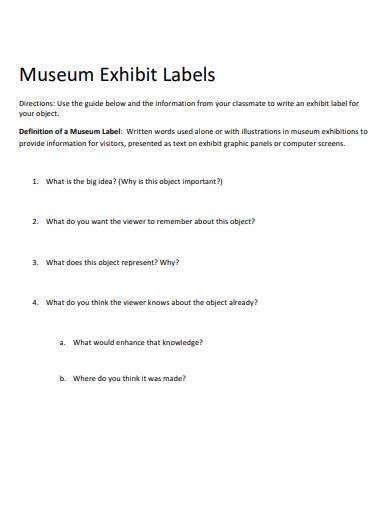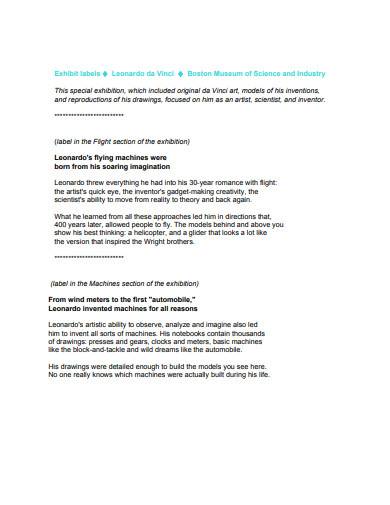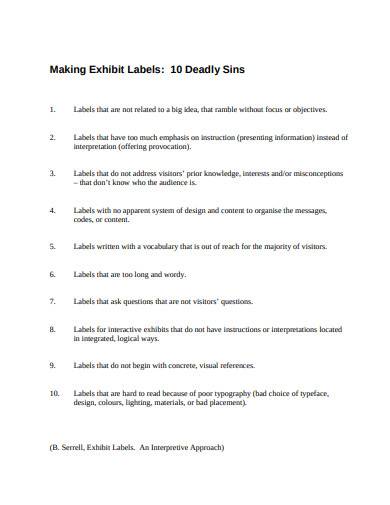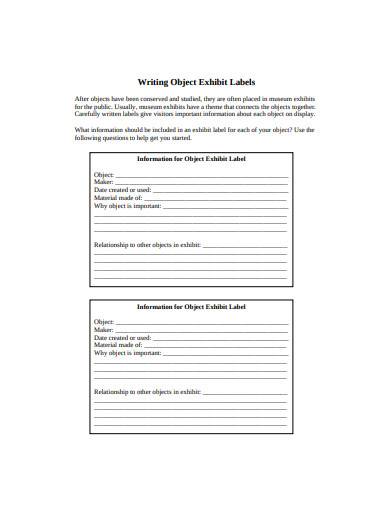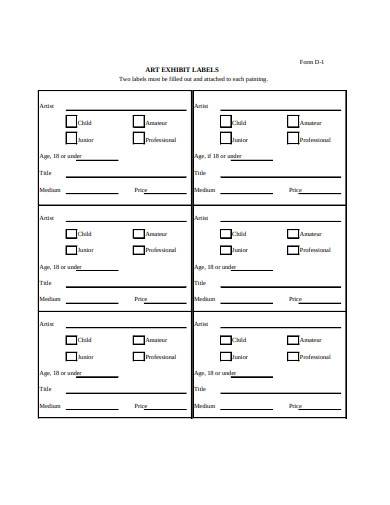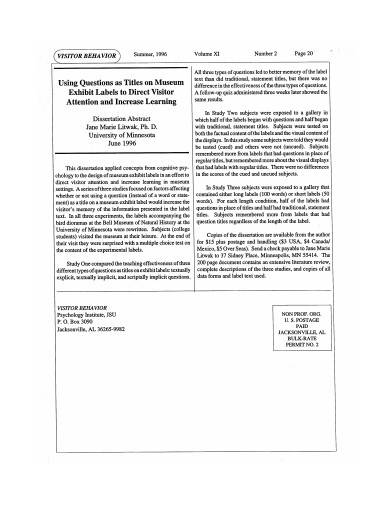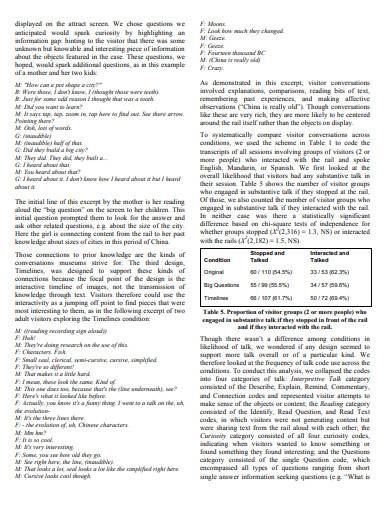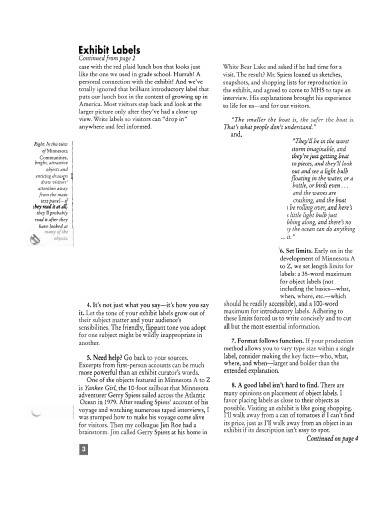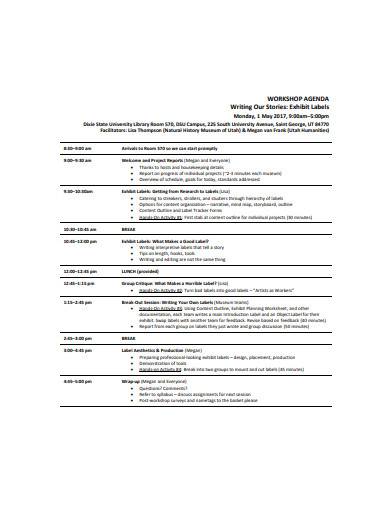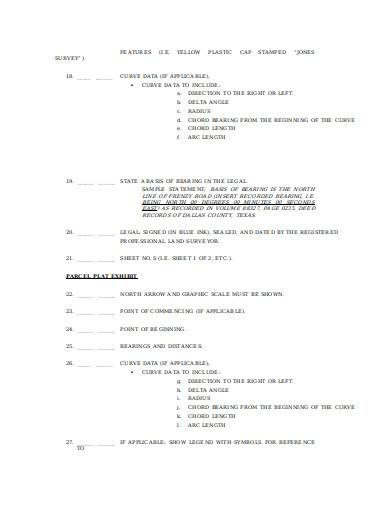Museums and exhibits hold items that can enrich the minds of its visitors and guests. But, it’s not every time that there’s a museum tour guide available to assist any that comes in, right? That’s when exhibit labels come in handy. These are the ones that contain details of the exhibit, such as its title and origin.
What Is an Exhibit Label?
Small, detailed, and extremely useful – that’s what an exhibit label is. For museums, a museum label will serve as an informational item that allows the reader to know the history of the exhibited item. While, for galleries, it will be a tool to connect readers to the owner of the displayed piece. With that, the reader who’s interested in it will be able to know who he can reach out and how much it’s worth if it’s up for bid or sale.
The Rise of Modern Exhibit Labels
According to researcher and historian, Dana Fragomeni, in her “Evolution of Exhibit Labels” paper, “museums around the world have witnessed radical innovations in the development and evolution of exhibit labels.”. And indeed labels became a staple in every museum. Writers who can do research and curations about specific items and subjects are getting hired by museums to make labels. The target was not only to inform visitors and readers but also to engage them in the exhibit. Whereas in the previous decades, labels were lazily made using jargon that average people can’t comprehend.
In today’s generation, museums and galleries use various exhibit label designs and methods. Some forgo the usual rectangular-sized ones filled with texts to utilize images and graphics. Also, some museums use backgrounds with labels to allow interaction from the audience.
What’s In an Effective Exhibit Label?
Proper labeling of exhibits is essential in the growth and success of a museum or gallery. So, if you plan to make an exhibit label on your own, then you must take note of the following tips:
Tip 1: Use Questions As Your Introduction
There’s nothing more stimulating to a reader than having to answer a question. You can choose ones that directly relate to a general audience or to day-to-day life.
Tip 2: Keep It Short
Although an exhibit label is for informing about a specific item such as a museum object, it is not the right tool to use for delivering lengthy historical stories. Save the history background details online, and keep the label short with only the essentials stated. The discovery or creation date with the names of the involved people and its address label are some of the necessary info to include.
Tip 3: Ensure That Text and Background Colors Don’t Clash With One Another
Neon pink might be your favorite color, but it’s not the most preferable color when it comes to creating texts and labels. Why? Because it’s too bright and irritating to the eyes of the reader. So, what would be your best option? A simple monochrome would do, as well as the most used black and white colors.
9+ Exhibit Labels Samples in PDF | DOC
Even the best writers and designers use printable label templates and guides to create a masterpiece that their clients will use. And that is why we give you these exhibit label samples, which are best for your museum, gallery, and any exhibition needs. Each sample label template is unique for every purpose and preference:
1. Museum Exhibit Label Sample
2. Exhibit Labels Sample
3. Making Exhibit Labels Example
4. Writing Object Exhibit Labels Template
5. Art Exhibit Label Sample
6. Formal Exhibit Label Sample
7. Basic Exhibit Label Template
8. Exhibit Label in PDF
9. Exhibit Label Example
10. Exhibit Label in DOC
Essential Parts of an Exhibit Label
The best thing about exhibit labels is the fact that it does not cost much of your financial resources unless you hire a designer, of course. So, instead of getting a designer to do the job for you, why not make one by yourself using our exhibit label templates in pdf and other file formats, and by keeping the essentials in mind? Below are some of the items you must take note of and include in each of your labels:
1. The Title of the Exhibit
Be it a photo, an installation, or a discovered fossilized item, your title should be both direct and interesting. Why? To catch the attention of your visitors and readers further. And if you’ll be including a statement or subtitle, it must not be longer than 25 words to keep in concise.
2. The Topic or Explanation of the Exhibit
This is where the story of your exhibit goes. A 100-150 word count will be the best limitation for this area if it’s necessary to include bites of its history.
3. The Exhibit’s Identification
The exhibited item’s scientific name, age, material type, and other descriptions that identify it will be the contents of this part.
Also, an exhibit label can have the accession, serial number, and the price of the item. And, as the exhibitor, you can add other details in it, for as long as it provides more interaction with your visitors and readers, and it’s relevant to the purpose of your museum or gallery exhibit.
Related Posts
Weekly Schedule Samples & Templates
Contractual Agreement Samples & Templates
FREE 9+ Amazing Sample Church Bulletin Templates in PSD | PDF
Sample Business Card Templates
Sample Cashier Job Descriptions
Questionnaire Samples
FREE 10+ Sample HR Resource Templates in PDF
FREE 10+ HR Consulting Business Plan Samples in MS Word | Google Docs | Pages | PDF
FREE 49+ Sample Job Descriptions in PDF | MS Word
FREE 16+ Nonprofit Budget Samples in PDF | MS Word | Excel | Google Docs | Google Sheets | Numbers | Pages
FREE 13+ Academic Calendar Templates in Google Docs | MS Word | Pages | PDF
FREE 10+ How to Create an Executive Summary Samples in Google Docs | MS Word | Pages | PDF
FREE 23+ Sample Event Calendar Templates in PDF | MS Word | Google Docs | Apple Pages
Company Profile Samples
FREE 10+ Leadership Report Samples [ Development, Training, Camp ]

